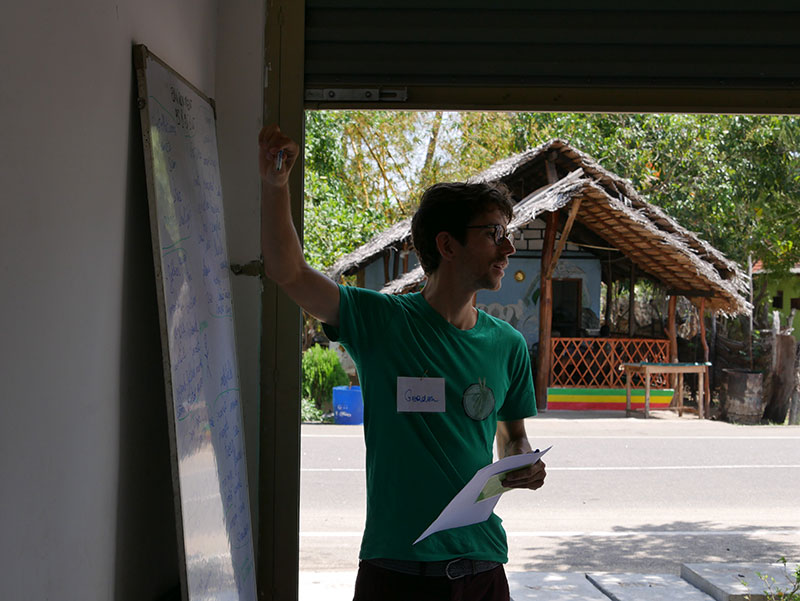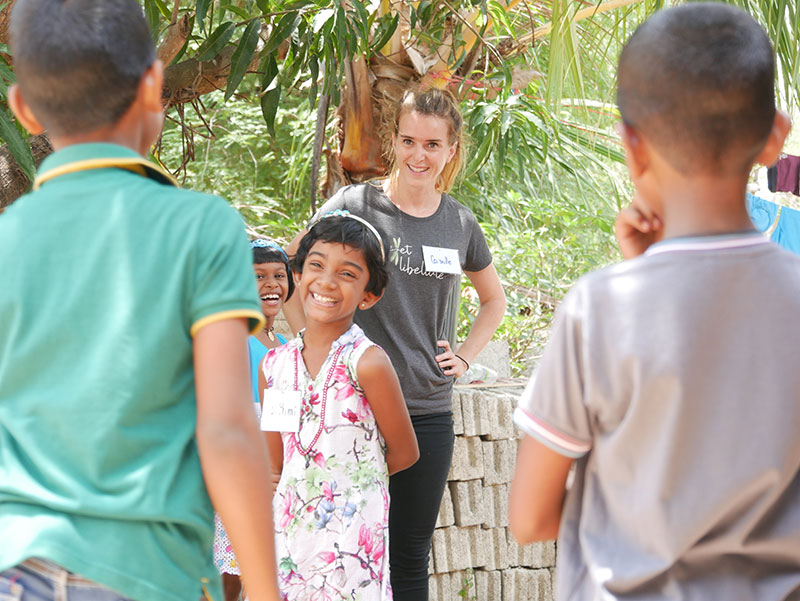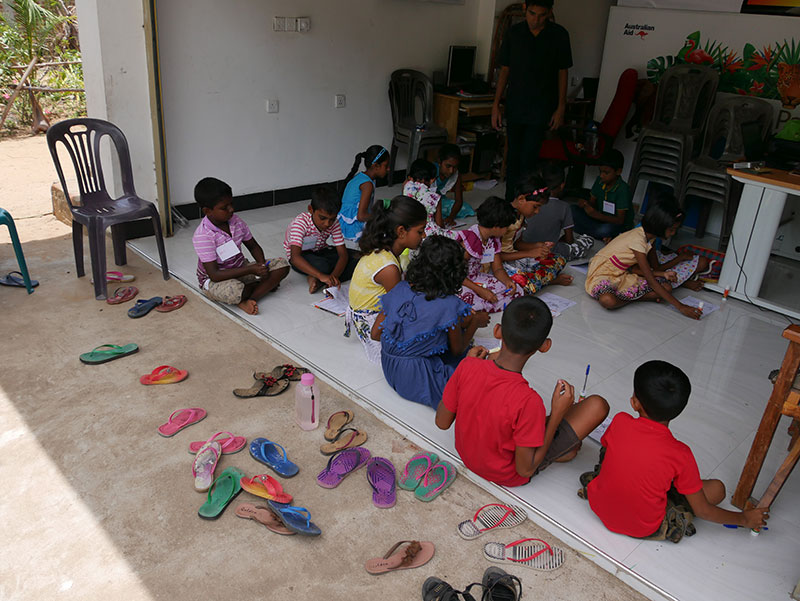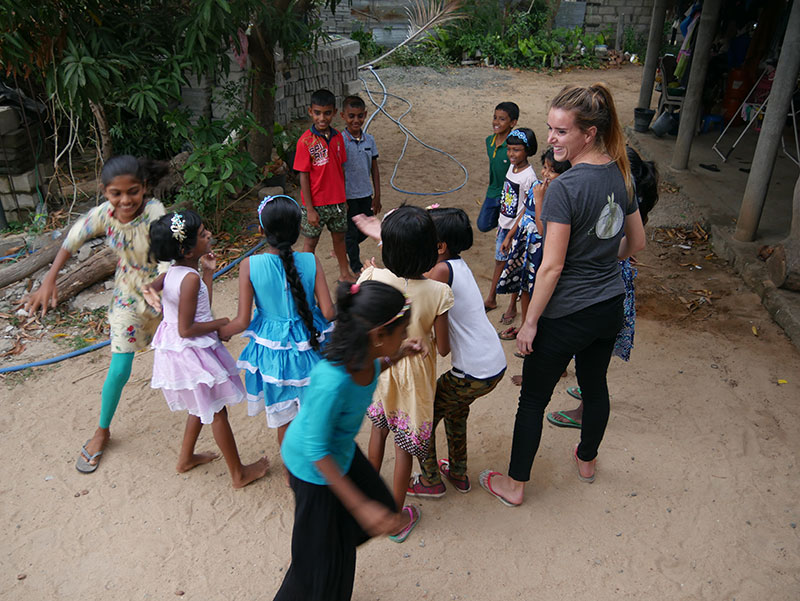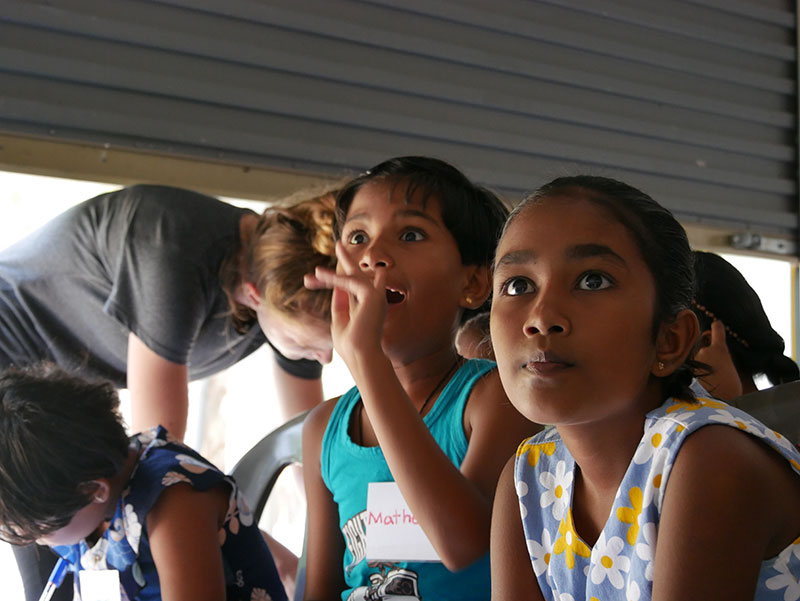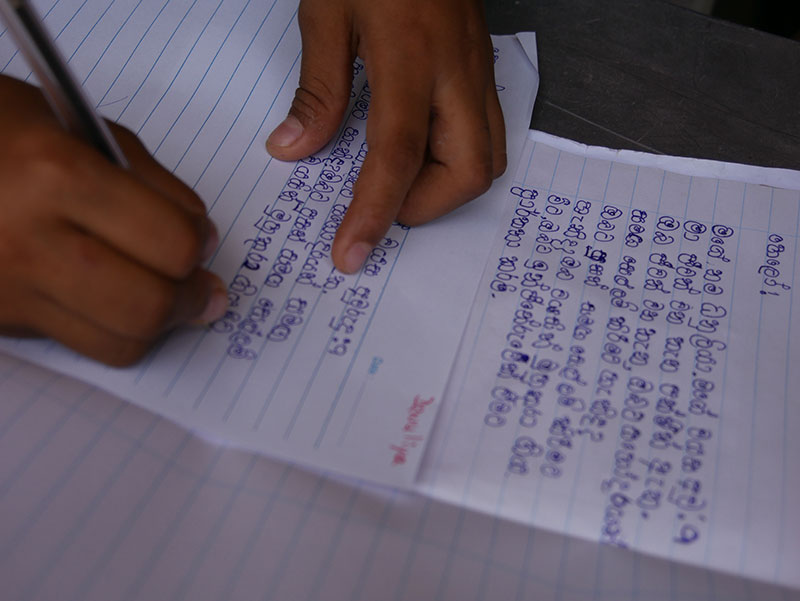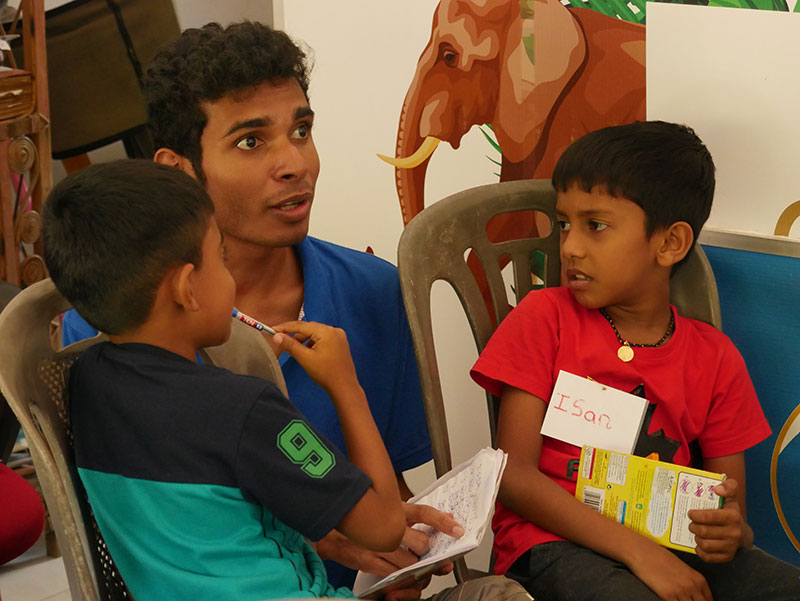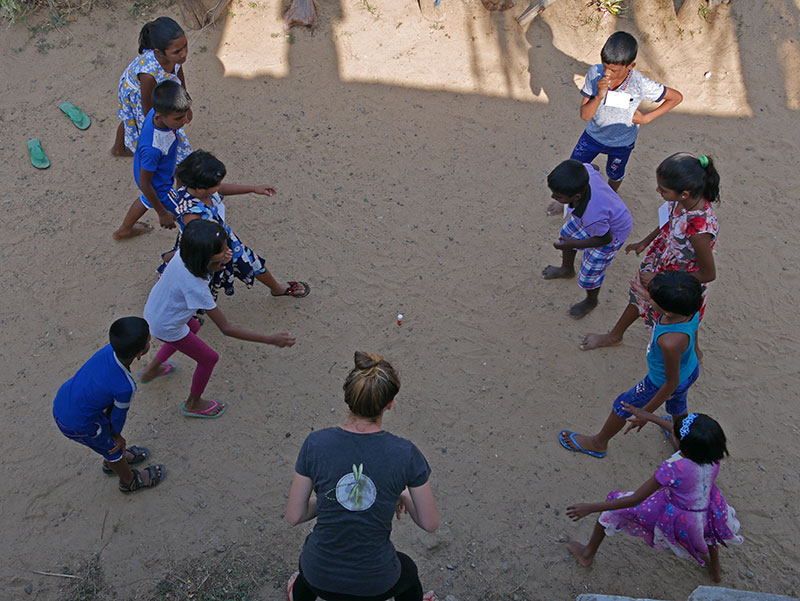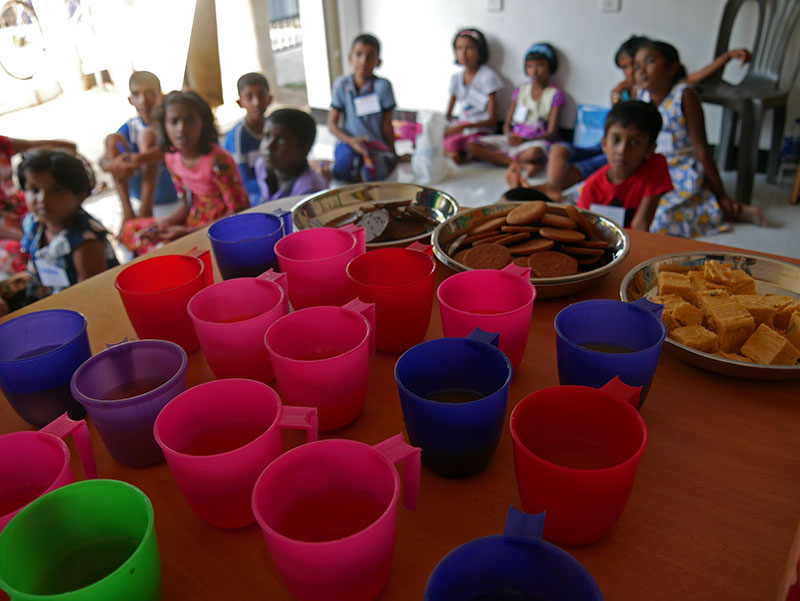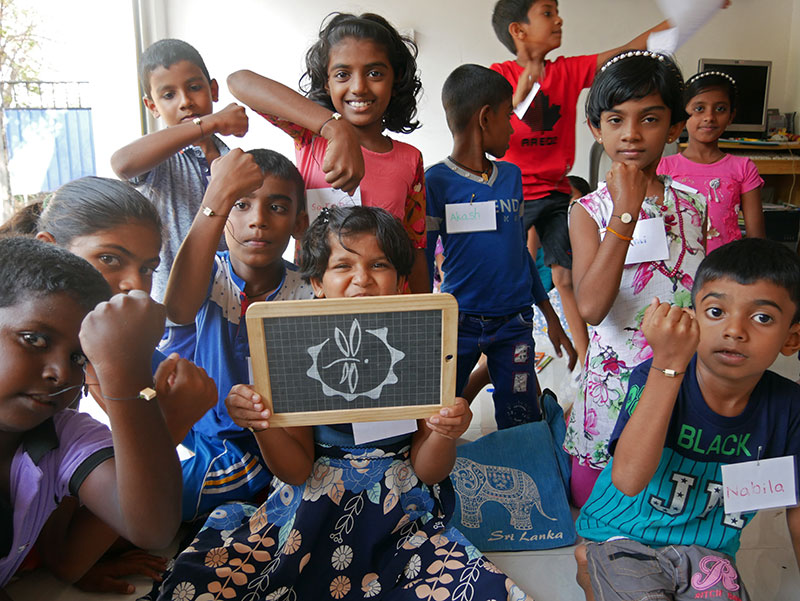- The stone does not fly Matheesa, 9
- To use them as a container to drink Sarani, 10
Summary
In the southeast of the spice island of Ceylon, Sri Lanka, near the Yala and Kumana wildlife parks, is the village of a thousand inhabitants of Panama. The village, the last human stronghold in the South before the jungle, is bordered by a lagoon and a long beach with beautiful waves suitable for surfing. However, the village still remains in the shadow of its neighbour, Arugam Bay, which is home to almost all the tourists and surfers who visit the region. When we arrived, only a few metres from the village, dozens of peacocks pecked, in the yellow grass dried by the sun, the few roasted seeds that they could still find in the fields. Then, a few minutes before arriving in the village, a solitary elephant walks along the edge of the jungle.
New experience for the project, this time we are working on weekends as part of a local association, not in a classroom. About fifteen children were gathered between the ages of 8 and 12 in a small room, usually used as an office for a safari agency. The installation is brief, a few chairs at most that we will arrange over the workshops.
This new format brings a number of constraints. The ages are not homogeneous, neither is the knowledge. We cannot count on the help of a teacher to help with the organization, and it will not be possible to follow up on our action. The children smile at us and seem happy to be present despite the fact that we offer them additional "classes" in the middle of the weekend.
When the notebooks, pens and glue sticks are distributed, the children are half amazed, half surprised, they are usually not allowed to use a ballpoint pen before high school. It is also the first time they have learned to use a glue stick. Curious, they smell the glue, have fun getting it out of the tube as much as possible, then mark their name on it, and stick stickers on it. Sometimes sitting on a chair, sometimes on the floor to write, the children follow the workshops we offer them attentively. Sohan, a young Sri Lankan from the capital, helps us to translate our explanations, as well as the children's answers. The children appreciate it, and it will facilitate the implementation of our workshops throughout these two days.
Their knowledge of science or geography is very limited, as these are subjects that are not taught until the end of primary/beginning college. Nevertheless, they are curious to see images from other countries, other children. They know the basics of recycling, pollution, the importance of trees, and have a good knowledge of the wildlife around them. For two days, the children will be attentive, curious and respectful. We will have just noticed a certain jealousy between them when distributing pencils of non-identical colours and correspondence letters.
At the break, the children come to kiss our feet, as a sign of respect for the "guru" (teacher). Our interpreter will tell us that this practice is not common and is normally reserved for religious practices. For the first time, we organize some recreational games to let off steam and get the children's attention. They will be very receptive to this new operation.
Children like to question what they are told, with comments from time to time that leave us with no answers. To explain our dependence on bees, we explain that they allow the reproduction of flowers that turn into the fruit we eat. A child then replies: "Technically, we don't need to eat, just drink...". Or to the question of why we need the fish, a student will answer: "because it's beautiful".
There is here, a beginning of reflection, a certain involuntary wisdom in these children's words that we should take the time to dig. And if ultimately, protecting the environment is not simply about protecting what makes each living being, each piece of rock, each landscape beautiful, complex and unique. That beyond the natural / artificial separation which is itself a construction of man and therefore artificial, it is not simply a question of preserving the diversity of the world, our first source of inspiration, amazement and contemplation.
